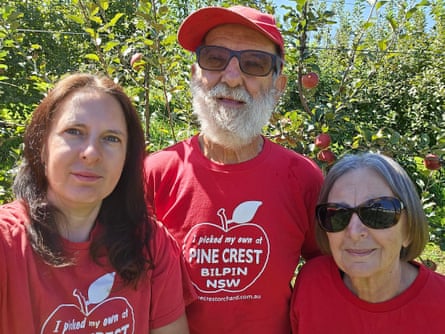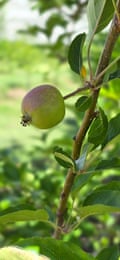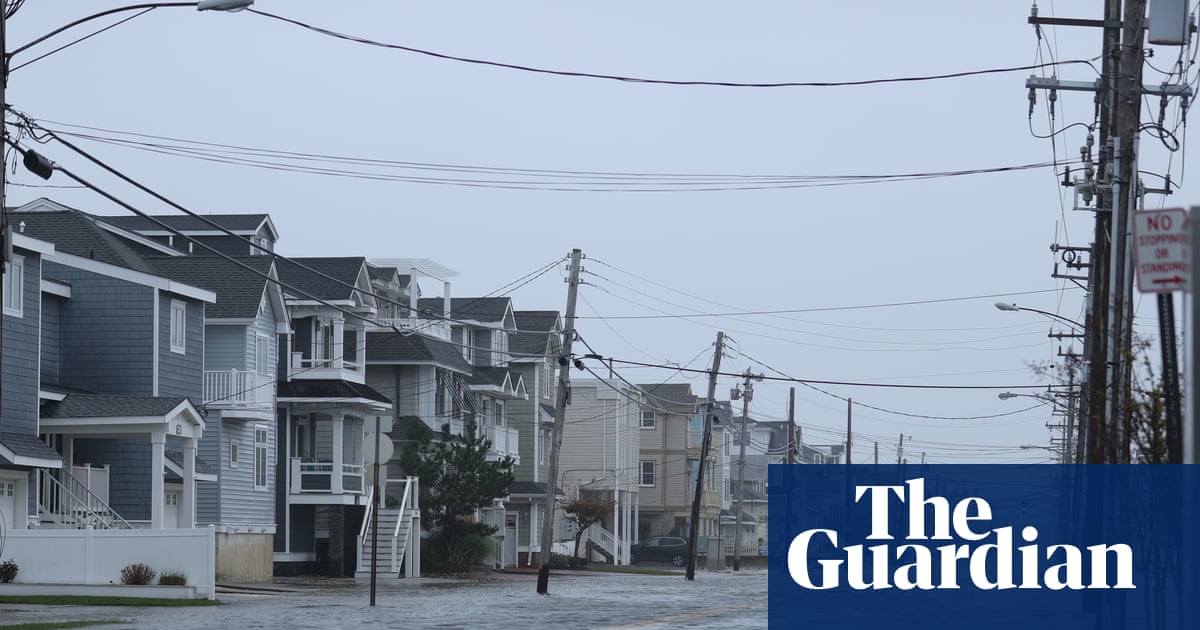At this time of year, Pine Crest Orchard in the Blue Mountains town of Bilpin would usually have about 1,000 visitors a day picking their own fruit from trees laden with apples.
But this season, the trees are mostly bare – and no one really knows why.
Orchardist John Galbraith, who owns and runs the farm with his wife, Erica, said he and the other local growers in Bilpin have been left scratching their heads about why, despite heavy flowering in spring, no fruit has formed.
“We had what looked like good blossom but then watching the trees over the second week of October I started to realise the flowers had fallen off and there were no apples,” Galbraith said.
“Instead of the petals falling off and leaving the centre of the flower (which becomes the apple), the whole flowers and stalk had fallen off and you could walk up and down the rows and couldn’t find any apples, which should be at that stage the size of a pea,” Galbraith said.
About 60% of the family-run orchard is made up of apple trees, so the financial impact for the Galbraiths will be severe.

Pine Crest is not the only orchard in the area to be affected by the unusual shortage of apples and it’s having a knock-on effect for tourism in the area, with day-trippers staying at home rather than spending money at pick-your-own farms.
The Greater Sydney Local Land Services held a workshop with growers and experts at Bilpin in late October to try to get to the bottom of the mystery.
Sign up: AU Breaking News email
A few possible causes were discussed including the weather – it was quite windy at the time, which could have caused bees to be ineffective in pollinating the crops – and varroa mite, which was first detected in Australia in June 2022 and has spread rapidly, affecting bee populations across the country.
Varroa mite has “caused a significant amount of wild bee hives to be destroyed, so there’s a lack of the wild European honeybees,” a Local Land Services spokesperson said.

“There was also the fact that there was flowering eucalyptus in the area, which are more attractive to the European bees that were brought in,” the spokesperson said. “Those hives would have gone for the eucalypt.”
Galbraith said that local growers at the workshop had shared their hypotheses to explain the lack of fruit, but nobody could really make sense of why it was happening.
“We did have a session on native bees … because of the problem with European bees who have varroa mite in them,” Galbraith said. “But we have a beekeeper that comes in who manages the hives and makes sure that there’s no mite in his hives, so I can’t see that it was terribly relevant to our situation.”
Galbraith said that the orchard’s soil and plants were tested on a regular basis: “we pick up any problems and deal with them”.
“The problem with not knowing what it is, is that you can’t then take action to ensure that it doesn’t happen the next year.”
Apple and Pear Australia Ltd (Apal), the peak industry body, was contacted but did not wish to comment on the matter.

 3 weeks ago
21
3 weeks ago
21

















































